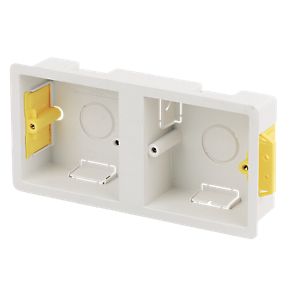Hello,
I'm replacing an oven and found that the old oven and the hob were both plugged in to the same connector terminal which is wired to the large red oven isolator switch

The wire plugged in goes to the hob and the one on the left was the old oven and was wired in here along with the hob.Both sets of wires in together.
Is it ok to do the same in wiring the new oven ??
The hob is rated 6600watts and the new oven is 2.5-3kw
Cheers
I'm replacing an oven and found that the old oven and the hob were both plugged in to the same connector terminal which is wired to the large red oven isolator switch

The wire plugged in goes to the hob and the one on the left was the old oven and was wired in here along with the hob.Both sets of wires in together.
Is it ok to do the same in wiring the new oven ??
The hob is rated 6600watts and the new oven is 2.5-3kw
Cheers




